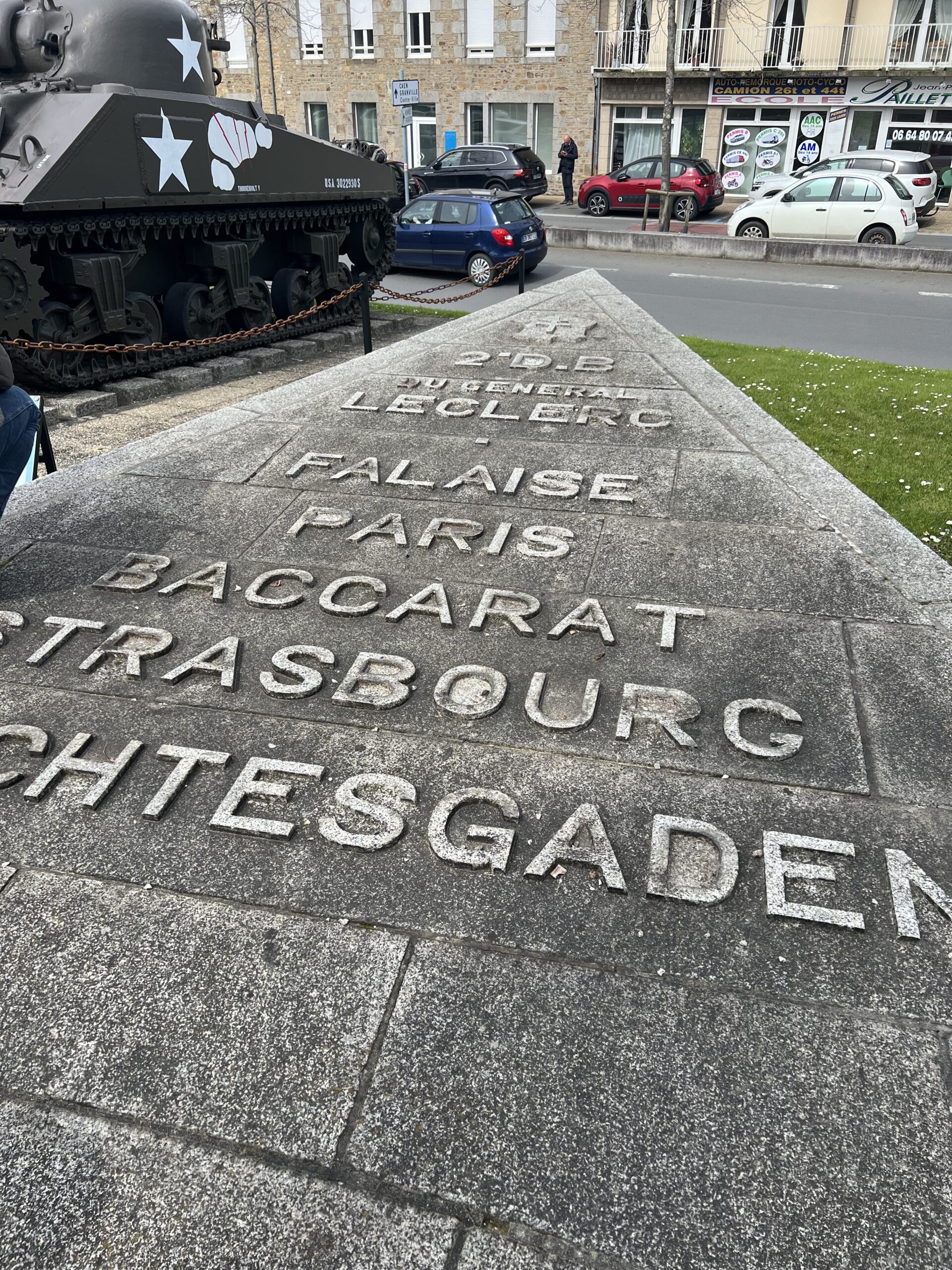Today is the 5th April 2023 and it is the fifth day of Paul’s Battlefield Tour in Normandy. This is Operation Cobra Day. Paul took us to start the day at Periers and then down the road towards Saint Lo, to view the bombing site which started Operation Cobra.

The plan devised by Bradley was to break though the German lines, and once out of the Bocage terrain move swifty securing the peninsula and into Brittany. A small rectangular are of land only a few miles long and less than a mile wide was chosen for one of the most concentrated Air Force bombings in WWII. The idea was to punch a hole in the German lines and then push the US armoured and infantry divisions southwards.
The safest way to hit the target was to fly along its length, but this was changed and most bombing was carried out flying across its narrow width. The Airforce had requested that the waiting troops hold back at least 3,000 yards, yet a decision was made for a safe zone of only 1,200 yards. Some troops were as close as 800 yards.
Overall, just under 4,500 bombs were dropped and 136 US soldiers were killed and 620 were wounded from their own bombing. The effect on the Germans was both physical and mental. Any of them caught, within the zone, who survived would have been in total shock, such was the carnage. It would have been like standing during an earthquake for over an hour. Three battalion command posts for panzer Lehr had been destroyed.

We travelled through the bombing zone to Le Mesnil-Amey Chateau, which was a HQ command post frequented by General Fritz-Bayerlein the Commander of Panzer Lehr. The roof of the Chateau is where he watched the bombardment which destroyed many of his tanks. Mag’s was able to speak to owner of the Chateau who allowed us to walk around it. The owner then spoke to us about his family’s history with the Chateau and what happened during the war. It was a great treat.

The race was now on and with the Germans in retreat the US divisions moved through towards Avranches. Air Power came into its own being able to attack the slow-moving German retreat. We stopped a certain points and looked at photographs of wrecked German armour hit by Allied airpower. There was nowhere to hide.

At Avranches we were able to see Mont-Saint-Michel in the distance and Brittany. We also viewed a large monument to General Patton. The monument stands on large compass points explaining which divisions were being sent across France. On the 1st August 1944 the US Third Army under General Patton was activated, and he was sent into Brittany to secure the ports. The US divisions moved eastwards and captured Mortain. Operation Luttich was started by the Germans as their counter offensive. Hitler had given the order to retake the lost ground and re-capture Avranches, thus cutting off the access to Brittany. Many German Generals were not happy with the plan as it was taking the main armoured divisions who had been holding the British and Canadians near Caen and diverting them westwards towards the US Divisions. This aided the British who had just launched Operation Bluecoat.

Operation Luttich was going to stretch the German Armoured divisions and increase the risk of little re-supply. We visited Mortain and stopped next to a disused Railway station. We were able to look at then and now photographs of the action which occurred there.



We then travelled to Hill 314 which is the main feature at Mortain. This has been captured by the Americans and was now under attack from the German troops advancing due to Operation Luttich. The US troops of 30th Division who held the summit of Hill 314, were cut off and a battle proceeded which lasted 6 days. Re-supplies had to shelled into the 30th Division positions. They only had one radio and no extra batteries. They used officer’s electric shavers and chewing hum foil to keep the radio working. The Germans never regained the summit.


We visited the summit, and the view was fantastic. You could still see American fox holes and we were able to understand how remote and isolated this position would have been. Of the 800 US soldiers defending the summit 400 would be killed or wounded during the battle.

By the 13th August Operation Luttich had failed, and the Germans started to retreat toward Falaise. American and British airpower over the previous days had made it impossible for the Germans to advance any further and they were now being overrun by the American Armoured Divisions.


I missed this day. This description, fills everything in.
Susan
You are very kind.